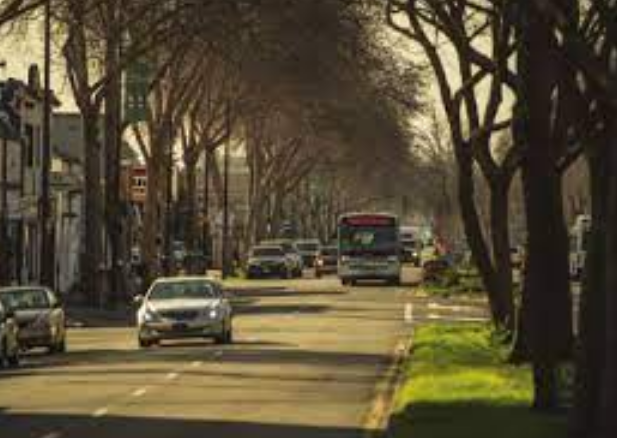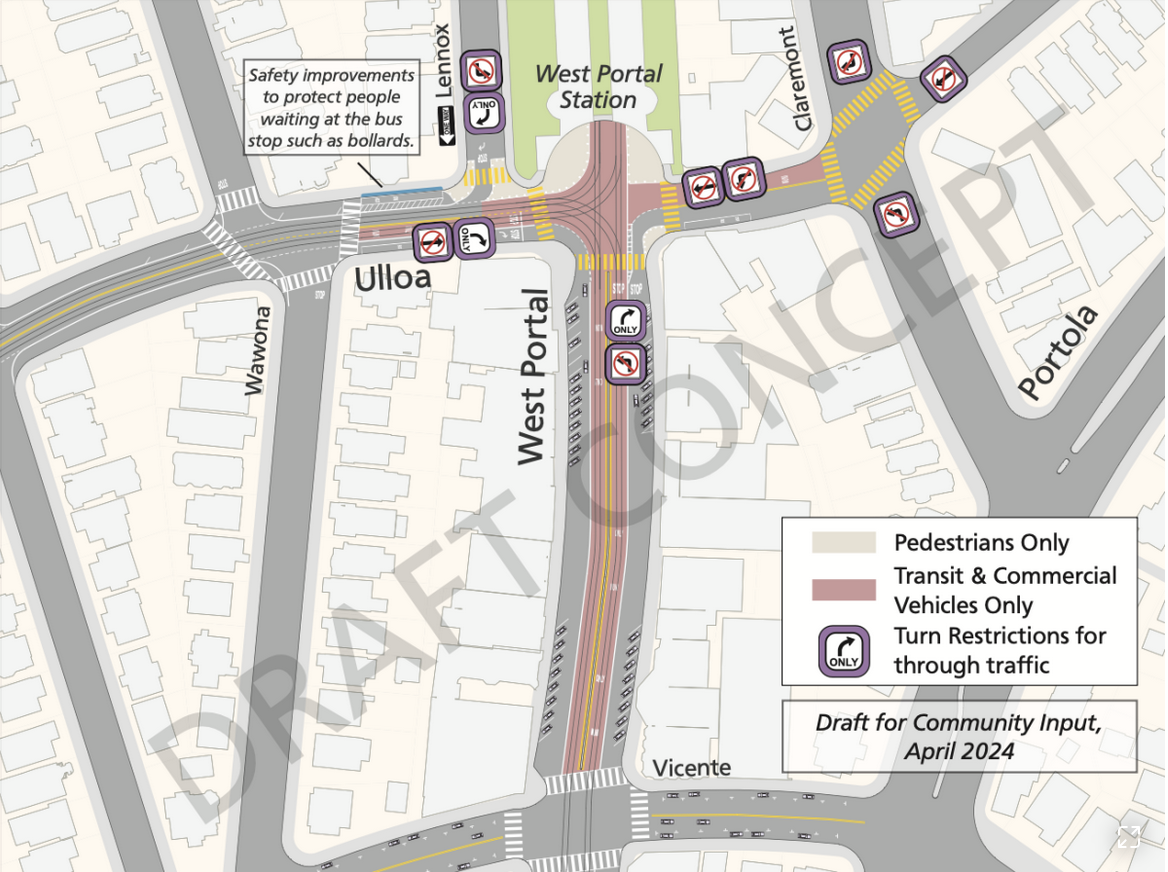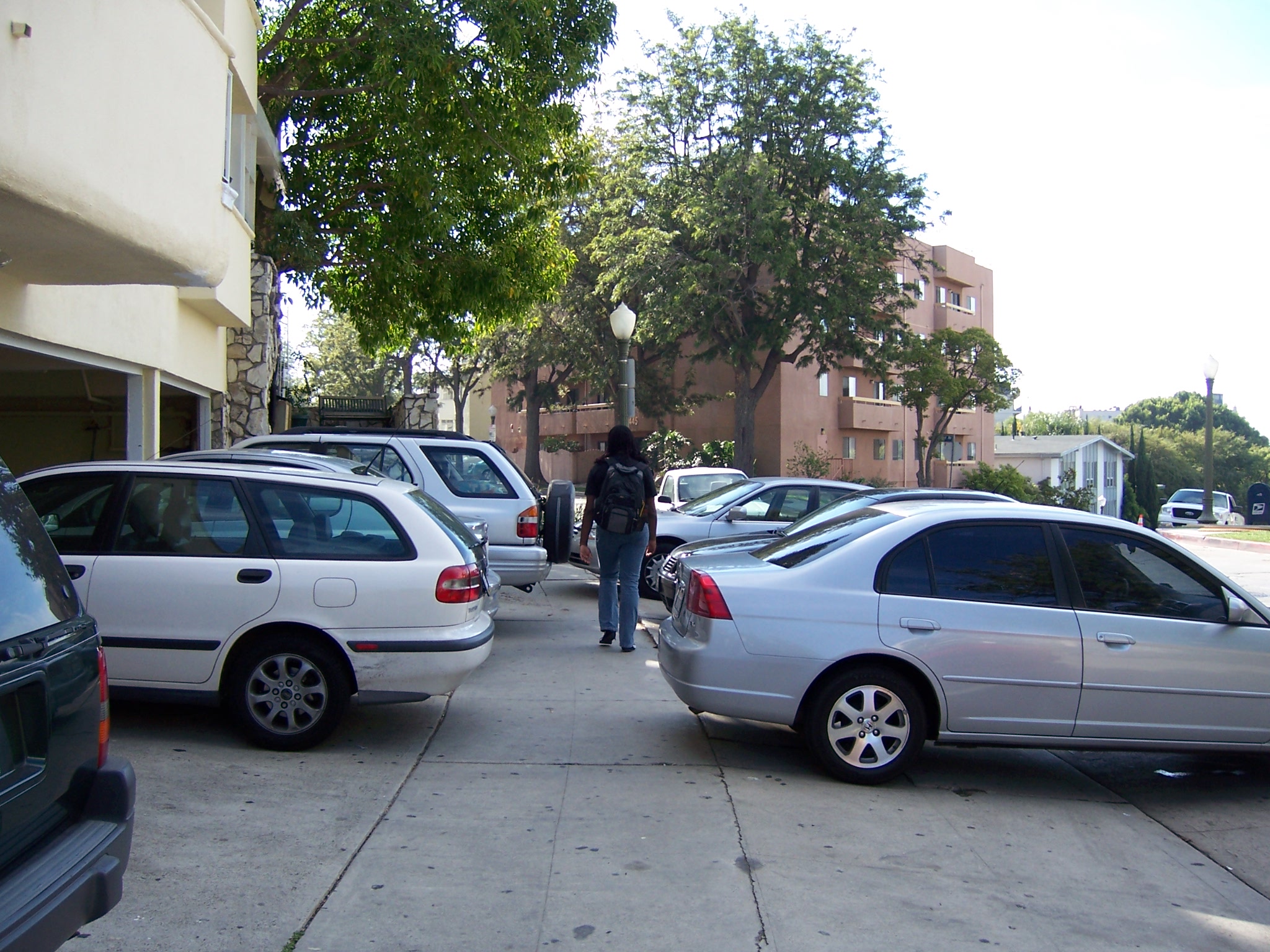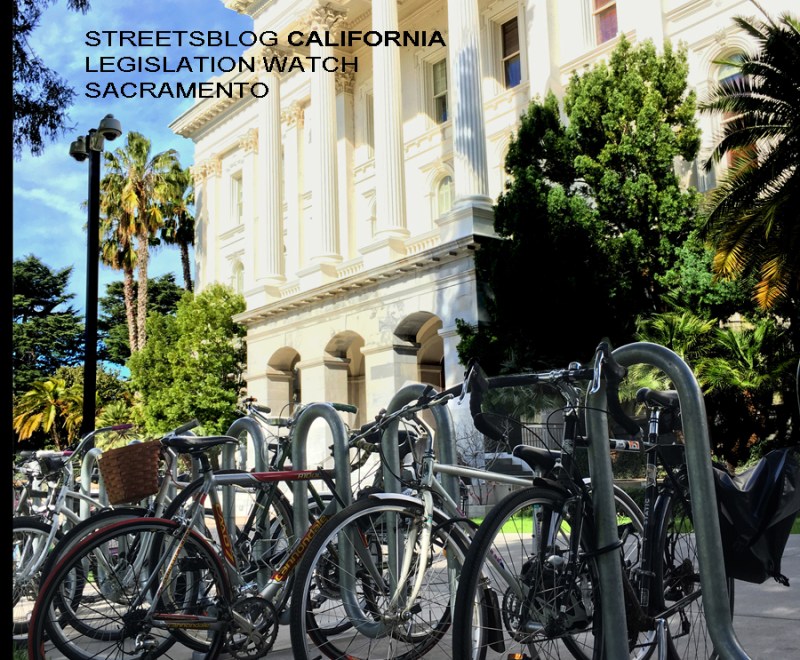USDOT Announces First Grants from its Safe Streets and Roads for All Program
4:49 PM PST on February 2, 2023

Note: GJEL Accident Attorneys regularly sponsors coverage on Streetsblog San Francisco and Streetsblog California. Unless noted in the story, GJEL Accident Attorneys is not consulted for the content or editorial direction of the sponsored content.
A new USDOT program, the Safe Streets and Roads for All Program, announced its first grants yesterday. The announcements covered the first $800 million of the $5 billion, five-year program. California communities are set to receive $133 million.
As pointed out by Streetsblog USA, the majority of the money will go towards creating local safety plans, which have been completely missing from many communities. While fewer actual projects were funded in this round, those projects that did get money received most of the program's funding. In California, six large "transformative" projects will receive about $100 million all together.
The National Association of City Transportation Officials (NACTO) congratulated the administration on the grants, which largely are for small scale investments in improved safety to help curb traffic deaths and improve equity where communities have been disconnected from each other. NACTO was especially pleased that USDOT collaborated with cities to design the program. USDOT took to heart many of the recommendations and suggestions [PDF] made by NACTO. These included ideas such as incorporating Vision Zero principles; evaluating the proposals based on goals and qualitative benefits rather than just a cost-benefit analysis; funding a wide range of construction and project-related activities; and encouraging the adoption of up-to-date design guidance.
The grants make up less than one percent of the total cost of the Bipartisan Infrastructure Law. Meanwhile plenty of the BIL's other investments will be in projects such as road widenings that can decrease safety for bike riders and people on foot.
In addition, the many smaller grants going to cities to help them begin planning for safer streets shows just how far there is to go before measurable safety benefits are on the ground. In some California communities, despite state-level policy support, there will likely still be an uphill battle to get projects built.
In other words, this is a welcome start, but it is just a start.
NACTO expressed the hope that the program will serve "as a model for future funding decisions across the U.S. transportation system–including informing how $300 billion in ‘formula’ federal funds are spent directly by U.S. states and territories every year."
The California grants, for a total of almost $133 million, will go towards:
- Contra Costa Transportation Authority: $29 million for bicycle and pedestrian safety improvements "to improve equity countywide." Projects include closing gaps in bicycle and pedestrian infrastructure along transit routes or linking to transit centers; enhancing bicycle and pedestrian signing and marking; installing loop detection upgrades for bicycles at traffic signals; modifying traffic signals to include leading pedestrian intervals; planting street trees; and installing bicycle lanes, ADA-compliant curb ramps, 12 rectangular rapid-flashing beacons, and a bike garden to provide bicycle and pedestrian safety education to groups and individuals.
- Los Angeles County: $21 million for Florence-Firestone for All, a Vision Zero plan along corridors with high collision rates. ADA curb ramps, curb extensions, raised crosswalks, raised medians, pedestrian refuge islands, speed cushions, high-visibility crosswalks, sign improvements, and removing sections of roadway to reduce conflicts are all included, as are two demonstration projects and a teen driver education campaign in schools.
- City of San Francisco: $18 million for Western Addition Community Safe Streets Project, which proposes traffic signal upgrades; pedestrian signal and crossing improvements; speed management strategies; quick-build strategies such as changes to parking, loading and transit stops; and other safety improvements at sixteen intersections along three corridors.
- Alameda County: $15 million for the San Pablo Avenue Safety Improvements Project. San Pablo Avenue provides access to more than twenty schools, ten community centers, four libraries, six food banks, and other community gathering spaces. The project includes multiple multimodal safety improvements, including bus bulb-outs and bus stop relocation, in-lane transit stops, and the creation of parallel bike routes along the fourteen-mile corridor (note that advocates have pushed for separated bike lanes ON the corridor, but some cities crossed by the corridor have balked at the idea).
- Modoc County: $13 million to improve safety along two corridors in rural disadvantaged communities and Tribal areas that have the County’s most dangerous crash history: County Road 91 and County Road 1. The project will implement community requests for bicycle lanes, pedestrian crosswalks, speed control, and mobility-assisted support infrastructure, and update crash data.
- City of Los Angeles: $9 million for La Brea Avenue Complete Streets Project. New pedestrian crosswalks and signals; sidewalk repairs; upgraded markings; street tree plantings; and upgrades to the transit user experience to support the city's Vision Zero goals.
- City of Wildomar: $2 million for Sedco Blvd. Improvements. Bicycle lanes, sidewalk improvements, and three roundabouts along a 0.19-mile segment that link two planned bicycle corridors.
In addition, local and regional safety plans supported by the federal grants are:
- Los Angeles Metro Comprehensive Safety Action Plan: $6 million
- City of San Diego Safe Streets for All San Diegans: $680,000
- San Diego Regional Comprehensive Safety Plan: $2.5 million
- City of Modesto Safety Action Plan: $1 million
- BART Safety Action Plan: $1 million
- County of Orange Local Road Safety Plan: $808,000
- Yuba-Sutter Regional Safety Action Plan: $800,000
- Butte County Safety Action Plan for Bikes, Pedestrians and Motor Vehicles: $788,000.00
- Palm Desert Vision Zero Strategy: $720,000
- Santa Cruz County Safe Streets for All Action Plan: $688,000
- City of Stockton Comprehensive Vision Zero Action Plan: $646,000
- Riverside County Action Plan for Unincorporated Communities: $640,000
- City of Costa Mesa Safe Routes to School Action Plan: $631,000
- Town of Apple Valley Complete Streets Plan: $600,000
- County of Madera Comprehensive Safety Action Plan: $492,000
- City of Santa Clara Vision Zero Plan: $450,000
- City of Moreno Valley Action Plan: $436,000
- City of Fresno Vision Zero Action Plan: $400,000
- City of Napa Complete Streets Improvement Plan for High-Injury Corridor: $400,000
- San Francisco County Transportation Authority Vision Zero Freeway Ramp Intersection Safety Study: $360,000
- City of Dinuba Vision Zero Action Plan: $344,000
- San Luis Obispo Regional Safe Streets Action Plan: $320,000
- City of La Habra Safe Routes to School Action Plan: $320,000
- City of Rialto Action Plan: $320,000
- City of Fresno Safe Streets for All Action Plan: $303,000
- City of Redding Safe Streets and Roads For All Action Plan: $300,000
- City of West Sacramento Comprehensive Safety Action Plan: $280,000
- City of Pleasant Hill Action Plan: $240,000
- Robinson Rancheria Action Plan: $200,000
- City of Fullerton Safe Streets and Roads For All: $200,000
- City of South Lake Tahoe Vision Zero Action Plan $200,000
- City of Laguna Beach Safety Action Plan: $200,000
- City of Laguna Niguel Active Transportation Safety Plan: $200,000
- City of Colusa Comprehensive Action Safety Plan: $200,000
- City of Pasadena Safe Streets for All Action Plan: $200,000: $200,000
- City of Monterey Safe Streets for All Complete Action Plan: $200,000
- City of Seal Beach Safety Action Plan: $200,000
- City of Irwindale Safe Streets and Roads for All Action Plan: $184,000
- Trinidad Rancheria Safety Action Plan: $168,000
- Palo Alto Safe Streets for All Action Plan: $160,000
- Colusa Indian Community Council Safety Action Plan: $128,000
- City of Colton Citywide Comprehensive Safety Action Plan: $96,000
Streetsblog California editor Melanie Curry has been thinking about transportation, and how to improve conditions for bicyclists, ever since commuting to school by bike long before bike lanes were a thing. She was Managing Editor at the East Bay Express, editor of Access Magazine for the University of California Transportation Center, and earned her Masters in City Planning from UC Berkeley.
Stay in touch
Sign up for our free newsletter
More from Streetsblog California
Automated Enforcement Coming Soon to a Bus Lane Near You
Metro is already installing on-bus cameras. Soon comes testing, outreach, then warning tickets.
Friday’s Headlines
SF plans street redesign at crash site; Santa Cruz commission still supports plan to have both trail and rail; State budget includes subsidies for fossil fuel industry; Unhoused camping; More
Thursday’s Headlines
CA youth speak out on climate: How LA Metro plans to spend $ from canceled 710 freeway; Watch out, illegal SF parkers, tickets are coming; More
Legislators Tackle AV, School Zone Safety
Are AVs freight trucks ready to be deployed on California roads with no one in them?
Metro Looks to Approve Torrance C Line Extension Alignment
Selecting the relatively low-cost hybrid alternative should help the oft-delayed South Bay C Line extension move a step closer to reality




